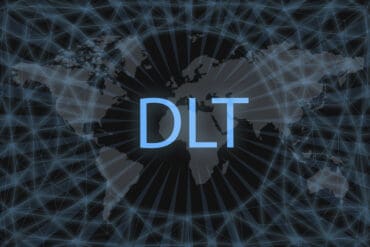Top AI investors reveal State of AI in 2022

What’s new in 2022, and what made Benaich and Hogarth dedicate an entire section
to AI safety, is the other end of AI safety. This is what Hogarth referred to as
AI alignment: ensuring that an extremely powerful and superintelligent AI system
doesn’t ever go rogue and start treating humanity badly in aggregate. The 2022
State of AI report is very much biased toward that end of safety because,
according to Hogarth, the topic is not receiving enough attention. “We’re seeing
exponential gain in capabilities, exponential use of compute, exponential data
being fed into these [AI] models,” Hogarth said. “And yet we have no idea how to
solve the alignment problem yet.” It’s still an unsolved technical problem where
there are no clear solutions, he added: “That’s what alarms me — and I think
that the thing that is probably the most alarming about all of it is that the
feedback loops now are so violent. You have huge wealth creation happening in
AI. So there’s more and more money flowing into making these models more
powerful.”
Interview with Vinayak Godse, CEO of Data Security Council of India
We see ourselves as an important catalyst in the National Cybersecurity
initiatives, especially in terms of the technology geopolitics that is now
hitting up; take the US–China tech war, for example. Cyber security in today’s
age and day has become pivotal because the coming decade is going to be driven
by technology, and cyber security is one fundamental area which will be driving
all of these transitions. As per NASSCOM’s TECHADE 2020: Digital Tech
Opportunities report, AI/ML, cloud, and cybersecurity will be crucial and
critical for this decade. But, how will that happen? There are many different
parts to this. Firstly, security should enable the growth of the industry. We
aim to prepare the industry, the society, the individuals and, most importantly,
the economy against possible issues and challenges regarding privacy. This is
the second part. With technologies such as AI/ML, Data Analytics, and VR/AR
gaining prominence, we will work towards solving the security problem in
relation to these emerging technologies.
How Can Business DataOps Drive Growth?

DataOps is a fast-expanding area of expertise. Data analytics and operations
specialists eager to learn how to develop and oversee DataOps procedures will
have a successful future. They have the opportunity to guide the following group
of data teams and set the bar for data practices for at least the ensuing ten
years. Additionally, a creative, quickly expanding organization that reduces
laborious and repetitive business activities will have happier and more
motivated employees. The time it takes to develop a concept into something
valuable is crucial to businesses. Through the use of agile development
methodologies, DataOps shortens lead times. Additionally, the interval between
rounds is shortened. Additionally, producing and dispersing solutions in tiny
pieces enables solutions to be applied gradually. Shadow IT may form in
businesses that use a sluggish development strategy for data solutions. Other
departments create their concepts without the IT department’s approval or
involvement.
Message Routing and Topics: A Thought Shift
There is one thing that caught my attention and fascination simultaneously. The
central theme of a real-time enterprise integration is message routing. Almost
all messaging systems employ an intelligent, interest-based subscription
mechanism that ensures the routing of messages to interested parties. The
intelligent part of routing is built with rules around the Event type (name) and
the content. Routing decisions based on an Event type name are straightforward
because they are easily accessible and available without unpacking the payload.
However, a routing based on filtering rules on the content would require
unpacking and evaluating the rules to determine a match. This directly impacts
message throughput and performance. Content-based message routing (CBR) is
performance-penalizing and not the best choice for real-time messaging scenarios
where latency costs good decisions. In the early days of integration,
content-based routing was considered essential.
Where Quantum Entanglement Is Actually Being Used

Quantum entanglement is a critical element of quantum information processing,
and photonic entanglement of the type pioneered by the Nobel laureates is
crucial for transmitting quantum information. Quantum entanglement can be used
to build large-scale quantum communications networks. On a path toward
long-distance quantum networks, Jian-Wei Pan, one of Zeilinger’s former
students, and colleagues demonstrated entanglement distribution to two locations
separated by 1,203 km on Earth via satellite transmission. However, direct
transmission rates of quantum information are limited due to loss, meaning too
many photons get absorbed by matter in transit so not enough reach the
destination. Entanglement is critical for solving this roadblock, through the
nascent technology of quantum repeaters. An important milestone for early
quantum repeaters, called entanglement swapping, was demonstrated by Zeilinger
and colleagues in 1998. Entanglement swapping links one each of two pairs of
entangled photons, thereby entangling the two initially independent photons,
which can be far apart from each other.
Virtual Panel: The New US-EU Data Privacy Framework
Given the Court of Justice of the European Union's (CJEU) stance regarding US
surveillance law, it is not clear how GDPR can be made compatible with
transatlantic data transmission. Thus it is likely that any new privacy
frameworks will be challenged in courts. Yet, the newly proposed Trans-Atlantic
Data Privacy Framework brings an attempt to solve the underlying issues and may
include an independent Data Protection Review Court as a mechanism to solve
disputes that could provide an effective solution. If the new framework did not
pass European Courts' scrutiny, it is possible that a completely different
approach to data privacy will be required in future to ensure data transmission
and collaboration while granting privacy rights, such as treating user data as a
currency or similarly to copyright. In this virtual panel, three knowledgeable
experts in the field of data privacy discuss where the existing agreements fall
short, whether a new privacy agreement could improve transatlantic data sharing
while granting privacy rights for EU citizens and stronger oversight of US
intelligence, and more.
Distributed Ledger Technology (DLT): The Solution to the Age of Digital Distrust?

DLT has more going for it than blockchain technology alone. Alternatives are
available across the DLT spectrum that already solve the so-called blockchain
trilemma: guaranteeing high security, scalability, and decentralization. While a
blockchain works with a linked list of blocks, IOTA, for example, uses the
‘Tangle,’ an acyclic fabric of mutually linked transactions that maintain the
global shared state of the ledger while boosting speed. In addition, IOTA also
avoids classic transaction fees, which would be prohibitive for applications in
the IoT area, through an alternative consensus algorithm based on the reputation
of the nodes. ... What makes DLT so exciting and relevant is that it was
conceived and developed for this decentralized digital world where trust is at a
premium. It’s not simply a case of storing the information safely that creates
trust. It’s also how it’s created and continuously ensured between all the
different partners of a business process. DLT determine the conditions under
which nodes of the decentralized infrastructure capture and record new
transactions and when they do not.
Digital innovation and the future of financial services
The growth of Web3 technologies also offers new opportunities, as the internet
evolves from read-only pages to more interactive and immersive experiences.
“Web1 is traditional data. Web2 added social [interaction] as data. And in Web3,
everything is data,” said Dr Booth. In Web3, that data has real value to its
users, and underlying blockchain technology allows it to be transferred and
monetised easily. The most recognisable example may be buying digital ‘land’ in
the metaverse. Transactions that take weeks in the real world can be completed
in seconds and recorded on a secure, immutable blockchain. “How we connect the
metaverse to the real-verse is going to be where banks will play a role,” said
Mr Williamson. The digitalisation of financial services will create virtual
mountains of new and complex data, generated from disparate sources and stored
in different locations. Yet when everything's digital, that kind of volume and
complexity becomes manageable. From Dr Booth’s point of view, AI is the
connective digital tissue holding everything together.
How to Prove the ROI of Your Enterprise Architecture Efforts

The ROI of EA can be felt at the highest levels of the organization, but it can
also have an impact at the individual department level. Cultivating this impact
involves both research into specific challenges different departments face and
educating department heads on what EA can do. For example, legal teams may not
know that enterprise architecture has a critical role to play when it comes to
navigating compliance standards and regulations. Similarly, marketing and sales
teams may not realize how EA can support data management to drive analytics and
personalization efforts. Every corporate function today depends on technology to
be effective. EA is all about better, more strategic uses of technology. It thus
falls to EAs to evangelize their capabilities across the enterprise, seeking out
often unexpected opportunities to improve operations and outcomes, department by
department. Getting users from across your organization on your EAM tool is no
small undertaking.
How to turbocharge collaboration in innovation ecosystems

Handled in the right way, collaborations will align and connect potential
co-innovators to a shared purpose—internally as well as externally. Importantly,
value creation is no longer just a numbers game. Echoing the motto of former
PepsiCo CEO Indra Nooyi, “performance with purpose,” impactful innovation in an
ecosystem is likewise driven by social values as much as by numbers. These are
reflected in the challenges and specific problems the collaborators seek to
address; in reframing the purpose, if necessary, so that it fits everyone’s
objectives; and in the way the collaboration defines success. Much as in a team
sport, egos and titles are swept aside in pursuit of a greater goal. ...
Disruption, the digital revolution, covid-19—in aggregate, these factors have
blurred and, in some cases, dissolved the boundaries between organizations,
segments, and entire industries. As a result, innovation ecosystems are emerging
as the dominant paradigm for corporate innovation. Yet, because of the
fundamental disparities embedded in their structures, ecosystems are difficult
to form and initiate, let alone sustain.
Quote for the day:
"Be a Strong Leader, Even If You Follow
a Weak Leader" -- Miles Anthony Smith
No comments:
Post a Comment